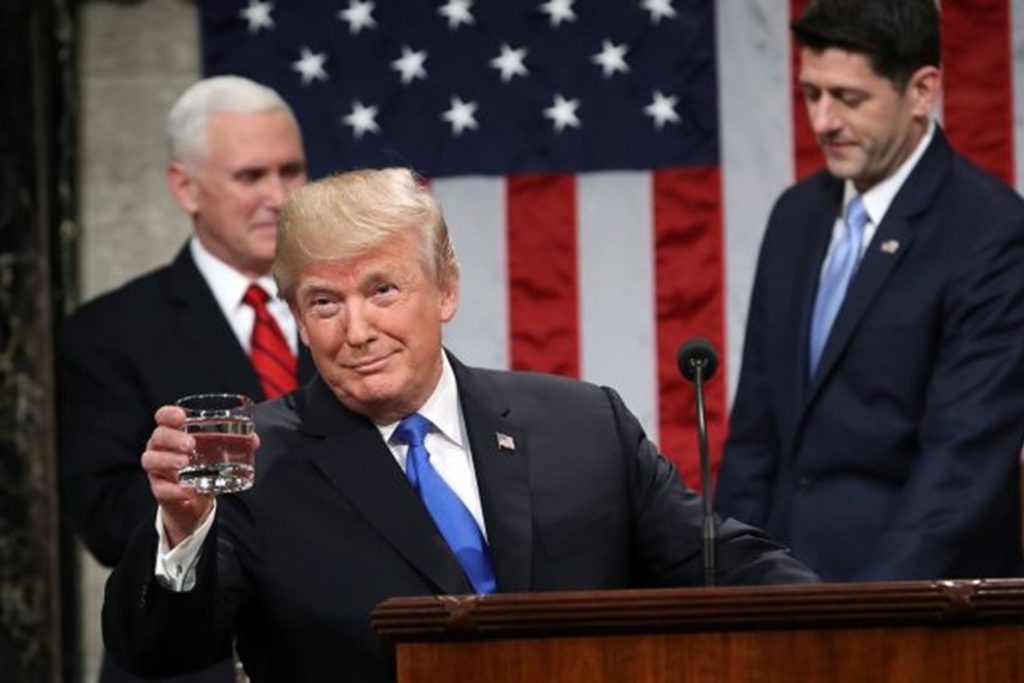Some observations about the new law & what it tells us about the politics of water infrastructure in America

The Senate recently passed the America’s Water Infrastructure Act (AWIA) by a 99-1 vote; today President Trump signed it into law. AWIA is pretty slender as federal infrastructure bills go, weighing in at 332 pages and 70,000 words.
What follows are some thoughts about AWIA’s main water infrastructure provisions and what they tell us about the state of water policy and politics in America. This isn’t really a coherent essay or an exhaustive commentary; it’s a series of cursory observations on the bits that strike me as interesting.
What’s new in Title II
Titles I, III, and IV include some important provisions, but much of it is garden-variety authorizations for sundry projects and studies, along with some light regulatory housekeeping. As a careful observer of water policy, the most interesting parts to me come in Title II—Drinking Water System Improvement.
Sections 2014-2015 have received the most public attention, as they include increases in federal grants along with changes to the State Drinking Water Revolving Fund program. Those funds will help with infrastructure investment, but is really a drop in the trillion-dollar bucket of America’s water infrastructure needs. That money will make a splash ahead of the midterm elections (more on that later), but isn’t all that interesting from a policy perspective.
Here’s what I find most intriguing in Title II:
- Sec. 2001: Indian Reservation Drinking Water. Literally the first section of Title II is a marked expansion of grant programs for tribal drinking water infrastructure—$20 million annually for the next four years.

That isn’t much in the grand scheme of American infrastructure, but it’s potentially huge for some tribal systems. My research with Mellie Haider & David Switzer has found that tribal facilities lag far behind non-tribal facilities in regulatory compliance, in part because tribes weren’t eligible for the vast federal grants available in the 1970s and 1980s. Sec. 2001 is a step toward correcting that. More generally, it’s fascinating that this program is the very first thing in Title II.* Hopefully this prominent spot in the AWIA presages greater efforts to build tribal drinking water capacity.
- Sec. 2002: Intractable Water Systems. In substance, Sec. 2002 isn’t terribly exciting—it just funds a study on water systems that consistently fail to meet regulatory requirements. But this section (along with Sec. 2010, discussed below) signals that Uncle Sam is interested in doing something about perennially poor water systems. Of particular interest are the tens of thousands of small utilities that serve fewer than a thousand customers, many of which lack the financial, physical, and human capacity to operate modern drinking water systems.*
- Sec. 2006-7: School lead testing & drinking fountain replacement. Section 2006 authorizes $75 million over three years to support lead testing in school drinking water lines. Sec. 2007 provides $15 million for school drinking fountain replacement. These programs remain voluntary, however, so its effectiveness will depend on local officials participating proactively. Federalism! As with most aspects of national drinking water policy, this only works insofar as local governments make it work.
- Sec. 2010: Ownership provisions. Innocuously named “Additional Considerations for Compliance,” this section empowers state regulators to “require the owner or operator of a public water system to assess consolidation or transfer of ownership… to achieve compliance with national primary drinking water regulations.” This section is aimed at repeat violators of the Safe Drinking Water Act, and although it’s weak in substance—it doesn’t actually require consolidation or change in ownership—it signals something about the potential direction of future water regulation. More frequent consolidation, privatization, and/or public condemnation of failing water systems may be on the horizon.*
What AWIA tells us about the politics of water infrastructure
AWIA provides more evidence that water infrastructure remains an very hot issue at the moment. A 115th Congress that has been historically contentious—it might struggle to pass a resolution that puppies are cute—just passed an infrastructure law with near consensus. The timing is noteworthy, as well: AWIA arrives just in time for midterm elections. Credit-claiming opportunities abound!
Crucially, none of the funding authorized in AWIA will turn into actual water infrastructure until Congress appropriates funds for it. Conveniently for the 115th Congress, the task of appropriating money for all of that water infrastructure will fall to the 116th.
*Has somebody in Congress been reading my research on tribal facilities, small system human capital, and water utility ownership?
